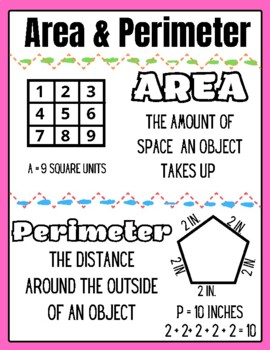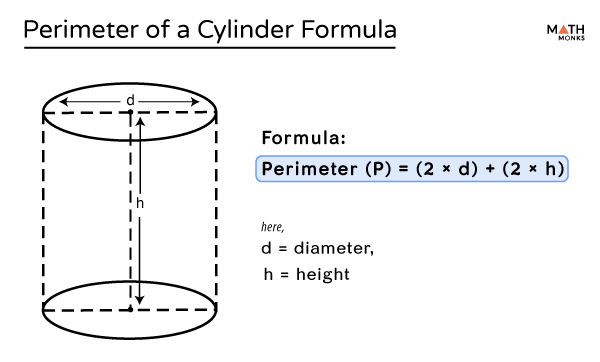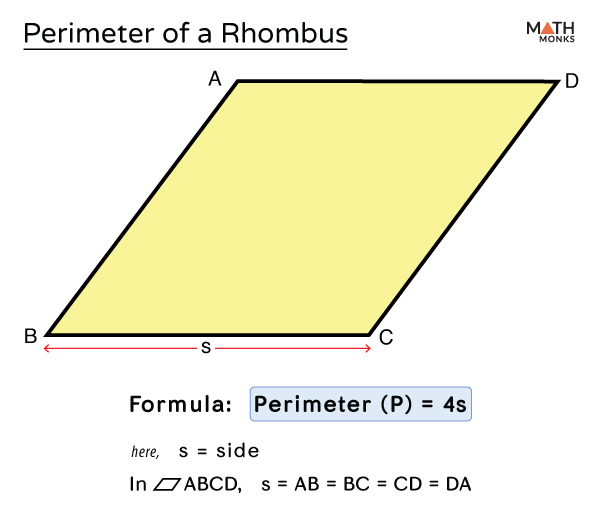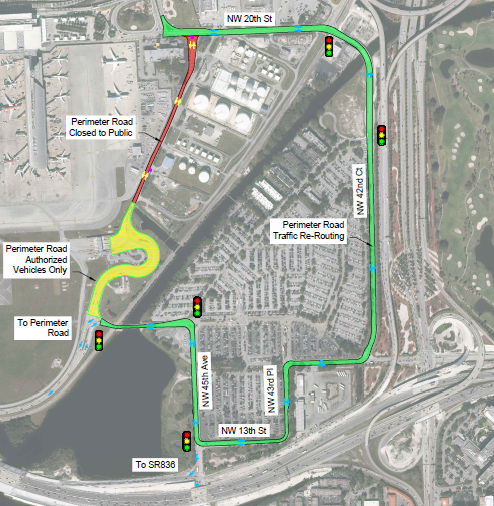Topic how to find perimeter of trapezoid: Learn how to find the perimeter of a trapezoid with our comprehensive guide. Whether you're a student or a math enthusiast, this step-by-step tutorial will make calculating the perimeter of any trapezoid easy and straightforward. Discover formulas, examples, and practical tips to master this essential geometric skill.
Table of Content
- How to Find the Perimeter of a Trapezoid
- Introduction
- Definition of a Trapezoid
- Properties of a Trapezoid
- Types of Trapezoids
- General Formula for Perimeter
- Step-by-Step Guide to Calculate Perimeter
- Example Calculations
- Special Cases of Trapezoids
- Perimeter of Isosceles Trapezoid
- Perimeter of Right Trapezoid
- Practical Applications
- Common Mistakes to Avoid
- Conclusion
- YOUTUBE: Hướng dẫn chi tiết cách tìm diện tích và chu vi của hình thang. Video này sẽ giúp bạn hiểu rõ hơn về các bước cần thiết và công thức tính toán.
How to Find the Perimeter of a Trapezoid
The perimeter of a trapezoid is the total distance around the shape. A trapezoid (or trapezium) is a quadrilateral with at least one pair of parallel sides. To find the perimeter of a trapezoid, you need to know the lengths of all four sides.
Steps to Find the Perimeter of a Trapezoid
- Identify the lengths of all four sides of the trapezoid. Let these sides be \(a\), \(b\), \(c\), and \(d\).
- Add the lengths of all four sides together to find the perimeter.
Perimeter Formula
The formula for the perimeter \(P\) of a trapezoid is:
\[
P = a + b + c + d
\]
Example Calculation
Suppose we have a trapezoid with side lengths \(a = 5 \, \text{cm}\), \(b = 7 \, \text{cm}\), \(c = 6 \, \text{cm}\), and \(d = 4 \, \text{cm}\). To find the perimeter, we add these lengths together:
\[
P = 5 \, \text{cm} + 7 \, \text{cm} + 6 \, \text{cm} + 4 \, \text{cm}
\]
\[
P = 22 \, \text{cm}
\]
Therefore, the perimeter of the trapezoid is \(22 \, \text{cm}\).
Special Cases
- Isosceles Trapezoid: An isosceles trapezoid has non-parallel sides that are equal in length. If \(a\) and \(b\) are the parallel sides, and \(c\) is the length of each of the non-parallel sides, the perimeter formula becomes:
\[
P = a + b + 2c
\] - Right Trapezoid: A right trapezoid has two right angles. The perimeter is calculated in the same way as a regular trapezoid, by adding the lengths of all four sides.
Practice Problems
- Find the perimeter of a trapezoid with side lengths \(a = 8 \, \text{cm}\), \(b = 10 \, \text{cm}\), \(c = 5 \, \text{cm}\), and \(d = 7 \, \text{cm}\).
- An isosceles trapezoid has parallel sides of lengths \(12 \, \text{cm}\) and \(16 \, \text{cm}\), with non-parallel sides each measuring \(9 \, \text{cm}\). What is its perimeter?

READ MORE:
Introduction
Finding the perimeter of a trapezoid is a fundamental geometric calculation that is useful in various fields such as engineering, architecture, and everyday problem-solving. A trapezoid, also known as a trapezium in some regions, is a four-sided polygon with at least one pair of parallel sides. These parallel sides are referred to as the bases of the trapezoid, while the non-parallel sides are called the legs.
In this guide, we will explore the different aspects of a trapezoid and provide a comprehensive method to calculate its perimeter. Whether you're a student learning about geometric shapes or a professional applying this knowledge in a practical context, understanding how to find the perimeter of a trapezoid is essential.
The perimeter of a trapezoid is the total distance around the shape, which can be calculated by adding the lengths of all its sides. This process involves a few straightforward steps, which we will break down for clarity. By following these steps, you will be able to determine the perimeter of any trapezoid, regardless of its specific dimensions or type.
Definition of a Trapezoid
A trapezoid is a four-sided polygon, also known as a quadrilateral, characterized by having at least one pair of parallel sides. These parallel sides are referred to as the "bases" of the trapezoid, while the other two sides are known as the "legs."
The basic properties of a trapezoid include:
- Bases: The two parallel sides of the trapezoid.
- Legs: The two non-parallel sides.
- Height (or Altitude): The perpendicular distance between the two bases.
- Base Angles: The angles adjacent to each base. The pairs of angles along each leg are supplementary, meaning their measures add up to 180 degrees.
There are several types of trapezoids, including:
- Isosceles Trapezoid: A trapezoid where the legs are of equal length and the base angles are equal.
- Right Trapezoid: A trapezoid with two right angles.
- Scalene Trapezoid: A trapezoid where no sides are of equal length and no angles are equal.
In the United States, a trapezoid is defined as a quadrilateral with exactly one pair of parallel sides. In contrast, in the United Kingdom, the same shape is often referred to as a "trapezium," while a "trapezoid" in the UK has no parallel sides at all.
Properties of a Trapezoid
A trapezoid, also known as a trapezium, is a four-sided polygon (quadrilateral) with one pair of parallel sides called bases. The non-parallel sides are called legs. Here are some key properties of trapezoids:
- Parallel Sides: A trapezoid has exactly one pair of parallel sides, referred to as the bases.
- Non-Parallel Sides: The non-parallel sides are called the legs of the trapezoid.
- Angles:
- The angles on the same side of a leg are supplementary, meaning they add up to \(180^\circ\).
- In an isosceles trapezoid, the base angles are equal.
- Diagonals:
- The diagonals of an isosceles trapezoid are equal in length.
- The diagonals intersect each other, but do not necessarily bisect each other.
- Median (Midsegment): The line segment connecting the midpoints of the legs is called the median. It is parallel to the bases and its length is the average of the lengths of the bases.
Formulas
Several important formulas are associated with trapezoids:
- Area: The area \(A\) of a trapezoid can be found using the formula: \[ A = \frac{1}{2} (a + b) h \] where \(a\) and \(b\) are the lengths of the bases and \(h\) is the height (the perpendicular distance between the bases).
- Perimeter: The perimeter \(P\) of a trapezoid is the sum of the lengths of all four sides: \[ P = a + b + c + d \] where \(a\) and \(b\) are the lengths of the bases, and \(c\) and \(d\) are the lengths of the legs.
- Median Length: The length \(m\) of the median can be calculated as: \[ m = \frac{a + b}{2} \] where \(a\) and \(b\) are the lengths of the bases.
Types of Trapezoids
Trapezoids can be classified based on the properties of their sides and angles. Here are the main types:
- Isosceles Trapezoid
An isosceles trapezoid has two non-parallel sides (legs) that are equal in length. The base angles (angles adjacent to each base) are also equal. This type of trapezoid has the following properties:
- The diagonals are congruent.
- There is one line of symmetry which bisects the bases and the height.
- Scalene Trapezoid
A scalene trapezoid has no sides of equal length. This means the legs and base angles are not congruent. The properties of a scalene trapezoid include:
- No lines of symmetry.
- Diagonals are not equal.
- Right Trapezoid
A right trapezoid has two right angles. One of the legs is perpendicular to the bases. The properties of a right trapezoid include:
- One leg is perpendicular to the bases.
- The height is equal to the length of the leg perpendicular to the bases.
Understanding these types can help in solving problems related to the perimeter, area, and other properties of trapezoids.
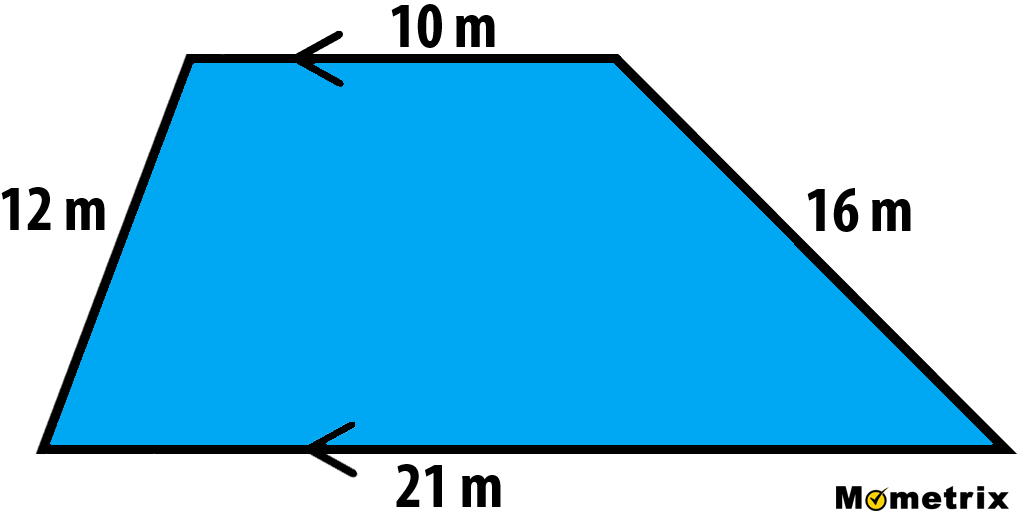
General Formula for Perimeter
The perimeter of a trapezoid is the total distance around its edges. To find the perimeter, you simply add the lengths of all four sides. The formula is straightforward:
\[
\text{Perimeter} = a + b + c + d
\]
Where:
- \(a\) and \(b\) are the lengths of the two parallel sides (bases)
- \(c\) and \(d\) are the lengths of the non-parallel sides (legs)
Here's a step-by-step guide to using the formula:
- Measure the lengths of all four sides of the trapezoid.
- Add the lengths of the bases: \(a + b\).
- Add the lengths of the legs: \(c + d\).
- Combine these sums to find the perimeter: \(a + b + c + d\).
For example, if a trapezoid has side lengths of 8 cm, 5 cm, 7 cm, and 6 cm:
\[
\text{Perimeter} = 8 + 5 + 7 + 6 = 26 \, \text{cm}
\]
In some cases, you may encounter special trapezoids like the isosceles trapezoid, where the non-parallel sides (legs) are of equal length. For such cases, the formula simplifies to:
\[
\text{Perimeter} = a + b + 2c
\]
where \(c\) is the length of one of the equal legs.
For example, for an isosceles trapezoid with bases of 10 cm and 6 cm, and legs of 4 cm each:
\[
\text{Perimeter} = 10 + 6 + 2 \times 4 = 24 \, \text{cm}
\]
Step-by-Step Guide to Calculate Perimeter
Calculating the perimeter of a trapezoid involves adding the lengths of all its sides. Follow these steps to find the perimeter:
-
Identify and Measure the Sides: Measure the lengths of all four sides of the trapezoid. Label them as follows:
- \(a\) and \(b\) as the lengths of the two parallel sides (bases).
- \(c\) and \(d\) as the lengths of the non-parallel sides (legs).
-
Use the Perimeter Formula: The formula for the perimeter of a trapezoid is given by:
\[ P = a + b + c + d \]
-
Substitute the Lengths: Substitute the measured lengths of the sides into the formula.
- For example, if the sides are \(a = 5\) units, \(b = 9\) units, \(c = 3\) units, and \(d = 7\) units:
- \[ P = 5 + 9 + 3 + 7 \]
-
Calculate the Sum: Add the lengths of all the sides to find the perimeter.
- \[ P = 5 + 9 + 3 + 7 = 24 \text{ units} \]
Thus, the perimeter of the trapezoid is the sum of the lengths of all its sides.
Let's consider another example to reinforce the concept:
Example: Find the perimeter of a trapezoid with sides 10 meters, 6 meters, 8 meters, and 9 meters.
Solution: Using the formula \( P = a + b + c + d \), we get:
\[ P = 10 + 6 + 8 + 9 = 33 \text{ meters} \]
Therefore, the perimeter of the trapezoid is 33 meters.
Example Calculations
To understand how to find the perimeter of a trapezoid, let's go through a few example calculations:
Example 1
Find the perimeter of a trapezoid with sides of 10 meters, 6 meters, 8 meters, and 9 meters.
- Identify the lengths of all four sides: 10 meters, 6 meters, 8 meters, and 9 meters.
- Use the perimeter formula: \( P = a + b + c + d \).
- Substitute the values into the formula: \( P = 10 + 6 + 8 + 9 \).
- Calculate the sum: \( P = 33 \) meters.
Thus, the perimeter of the trapezoid is 33 meters.
Example 2
Calculate the perimeter of a trapezoid where the sum of the lengths of the non-parallel sides is 12 units, and the sum of the parallel sides is 8 units.
- Identify the sums given: non-parallel sides = 12 units, parallel sides = 8 units.
- Use the perimeter formula: \( P = \text{sum of parallel sides} + \text{sum of non-parallel sides} \).
- Substitute the values into the formula: \( P = 12 + 8 \).
- Calculate the sum: \( P = 20 \) units.
Therefore, the perimeter of the trapezoid is 20 units.
Example 3
Consider a trapezoid with the following side lengths: 5 units, 7 units, 3 units, and 4 units.
- Identify the lengths of all four sides: 5 units, 7 units, 3 units, and 4 units.
- Use the perimeter formula: \( P = a + b + c + d \).
- Substitute the values into the formula: \( P = 5 + 7 + 3 + 4 \).
- Calculate the sum: \( P = 19 \) units.
Hence, the perimeter of this trapezoid is 19 units.
Example 4
Find the perimeter of a trapezoid if the lengths of the sides are 11 units, 9 units, 7 units, and 13 units.
- Identify the lengths of all four sides: 11 units, 9 units, 7 units, and 13 units.
- Use the perimeter formula: \( P = a + b + c + d \).
- Substitute the values into the formula: \( P = 11 + 9 + 7 + 13 \).
- Calculate the sum: \( P = 40 \) units.
Therefore, the perimeter of the trapezoid is 40 units.
Special Cases of Trapezoids
In this section, we will explore the special cases of trapezoids, which include isosceles trapezoids and right trapezoids. These types have unique properties that simplify the calculation of their perimeters.
Isosceles Trapezoid
An isosceles trapezoid has a pair of non-parallel sides that are equal in length. This symmetry helps in calculating its perimeter easily. The formula for the perimeter of an isosceles trapezoid is:
\[
P = a + b + 2c
\]
Where:
- \(a\) and \(b\) are the lengths of the parallel sides (bases)
- \(c\) is the length of the non-parallel sides (legs), which are equal
Steps to calculate the perimeter:
- Measure the lengths of the two parallel sides (\(a\) and \(b\)).
- Measure the length of one of the non-parallel sides (\(c\)).
- Use the formula \(P = a + b + 2c\) to find the perimeter.
Right Trapezoid
A right trapezoid has one pair of adjacent sides that form a right angle. The formula for the perimeter of a right trapezoid is:
\[
P = a + b + c + d
\]
Where:
- \(a\) and \(b\) are the lengths of the parallel sides (bases)
- \(c\) and \(d\) are the lengths of the non-parallel sides (legs)
Steps to calculate the perimeter:
- Measure the lengths of the two parallel sides (\(a\) and \(b\)).
- Measure the lengths of the two non-parallel sides (\(c\) and \(d\)).
- Use the formula \(P = a + b + c + d\) to find the perimeter.
For both types of trapezoids, ensure accurate measurements of each side to get a precise perimeter calculation.

Perimeter of Isosceles Trapezoid
An isosceles trapezoid is a special type of trapezoid where the non-parallel sides (legs) are of equal length. To find the perimeter of an isosceles trapezoid, you need to know the lengths of all its sides. The formula for the perimeter \(P\) of an isosceles trapezoid is:
\[ P = a + b + 2c \]
where:
- \(a\) and \(b\) are the lengths of the parallel sides (bases)
- \(c\) is the length of each of the equal non-parallel sides (legs)
Follow these steps to calculate the perimeter:
- Identify and measure the lengths of the parallel sides \(a\) and \(b\).
- Measure the length of one of the non-parallel sides (leg) \(c\). Since it is an isosceles trapezoid, the other leg will be of the same length.
- Substitute the values into the formula \( P = a + b + 2c \).
- Calculate the sum to find the perimeter.
For example, if the lengths of the parallel sides are \(a = 16\) units and \(b = 26\) units, and the length of each leg is \(c = 10\) units, the perimeter calculation would be:
\[ P = 16 + 26 + 2(10) \]
Thus, the perimeter \(P\) is:
\[ P = 16 + 26 + 20 = 62 \text{ units} \]
This method can be applied to any isosceles trapezoid as long as the lengths of the sides are known.
Perimeter of Right Trapezoid
A right trapezoid is a trapezoid with two right angles. This special property makes it easier to calculate the perimeter using a specific set of formulas.
The formula to find the perimeter of a right trapezoid is:
\[
P = a + b + c + d
\]
Where:
- \( a \) is the longer base
- \( b \) is the shorter base
- \( c \) is the height of the trapezoid
- \( d \) is the slant side
In a right trapezoid, you can also use the Pythagorean theorem to find the slant side \( d \) if it's not provided directly:
\[
d = \sqrt{(a - b)^2 + h^2}
\]
Here's a step-by-step guide to calculate the perimeter:
- Identify the lengths of the two bases \( a \) and \( b \), and the height \( h \).
- Calculate the slant side \( d \) using the Pythagorean theorem: \( d = \sqrt{(a - b)^2 + h^2} \).
- Add all the sides together using the perimeter formula: \( P = a + b + c + d \).
For example, if \( a = 10 \), \( b = 6 \), and \( h = 5 \):
- Calculate the slant side \( d \):
- Sum up all sides to find the perimeter:
\[
d = \sqrt{(10 - 6)^2 + 5^2} = \sqrt{4^2 + 5^2} = \sqrt{16 + 25} = \sqrt{41} \approx 6.4
\]
\[
P = 10 + 6 + 5 + 6.4 = 27.4
\]
Practical Applications
The concept of finding the perimeter of a trapezoid has several practical applications in various fields. Here are some common scenarios where this knowledge is useful:
- Architecture and Construction: Architects and builders often deal with trapezoidal shapes when designing buildings, roofs, and bridges. Calculating the perimeter helps in determining the length of materials needed for construction.
- Landscaping: Landscapers use trapezoidal designs in garden layouts, pathways, and retaining walls. Knowing the perimeter is essential for planning the borders and edges accurately.
- Art and Design: Artists and designers may incorporate trapezoidal shapes in their work, such as in stained glass windows or graphic designs. Calculating the perimeter ensures the dimensions are proportionate and fit within a specific space.
- Engineering: In mechanical and civil engineering, trapezoidal components are common in machinery and infrastructure. The perimeter is used to measure materials and ensure parts fit together correctly.
- Urban Planning: City planners use trapezoidal plots for parks, plots, and road designs. Knowing the perimeter aids in accurate mapping and allocation of space.
- Sports Fields: Some sports fields and tracks use trapezoidal designs. Calculating the perimeter helps in marking boundaries and setting up the field dimensions accurately.
Let's consider a specific example to illustrate the application in construction:
Example: Calculating Perimeter for a Roof Design
Imagine a trapezoidal roof with the following dimensions:
- Base 1 (a): 10 meters
- Base 2 (b): 6 meters
- Side 1 (c): 8 meters
- Side 2 (d): 8 meters
To find the perimeter (P), use the formula:
P = a + b + c + d
Substitute the values:
P = 10 + 6 + 8 + 8 = 32 meters
The perimeter of the trapezoidal roof is 32 meters. This measurement helps in determining the amount of roofing material required.
In conclusion, understanding how to calculate the perimeter of a trapezoid is essential in various practical applications, ensuring precision and efficiency in projects across different domains.
Common Mistakes to Avoid
When calculating the perimeter of a trapezoid, it is essential to avoid common mistakes that can lead to incorrect results. Here are some key points to keep in mind:
- Misidentifying the sides: Ensure you correctly identify all four sides of the trapezoid. Remember that a trapezoid has one pair of parallel sides, which are called the bases. The other two sides are called the legs.
- Using incorrect formulas: The perimeter of a trapezoid is the sum of all its sides. The formula is:
\[
P = a + b + c + d
\]
where \(a\), \(b\), \(c\), and \(d\) are the lengths of the sides. - Incorrect measurements: Double-check your measurements to ensure accuracy. Using incorrect side lengths will lead to an incorrect perimeter calculation.
- Ignoring units: Make sure all your side lengths are in the same unit before performing any calculations. Mixing units can lead to incorrect results.
- Assuming all sides are equal: Unlike squares or rectangles, the sides of a trapezoid are not necessarily equal. Verify the lengths of each side individually.
- Calculation errors: Simple arithmetic mistakes can result in an incorrect perimeter. Take your time to add the side lengths accurately.
- Confusing height with sides: The height of the trapezoid is not used in the perimeter calculation. Only the lengths of the sides are relevant.
By keeping these common mistakes in mind and carefully checking your work, you can accurately calculate the perimeter of a trapezoid.

Conclusion
In conclusion, finding the perimeter of a trapezoid is a straightforward process once you understand the properties and the formula involved. Here are the key points to remember:
- Identify all four sides of the trapezoid. Recall that the trapezoid has one pair of parallel sides known as the bases and two non-parallel sides known as the legs.
- Use the perimeter formula:
\[
P = a + b + c + d
\]
where \(a\), \(b\), \(c\), and \(d\) are the lengths of the sides. - Ensure all side measurements are accurate and in the same units. Convert units if necessary before performing the calculation.
- Double-check your arithmetic to avoid simple calculation errors. Summing the side lengths accurately is crucial for the correct perimeter.
By following these steps, you can confidently calculate the perimeter of any trapezoid. Practice with various problems to reinforce your understanding and accuracy. With these skills, you can solve real-world problems involving trapezoids and ensure precise measurements in various applications.
Hướng dẫn chi tiết cách tìm diện tích và chu vi của hình thang. Video này sẽ giúp bạn hiểu rõ hơn về các bước cần thiết và công thức tính toán.
Cách Tìm Diện Tích và Chu Vi Hình Thang
READ MORE:
Video hướng dẫn cách tính chu vi của hình thang. Tìm hiểu các bước và công thức để tính chu vi một cách chính xác.
Cách Tính Chu Vi Hình Thang

